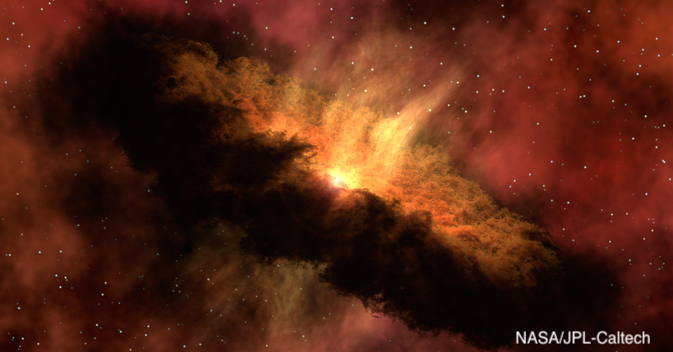Angular momentum is a fundamental stellar parameter that directly influences the stellar structure and its evolution. Over the lifetime of low-mass stars, most of the angular momentum is lost during the early pre-main-sequence phase, when the stars still host protoplanetary disks and magnetically interact with them.
Fifty years ago, some early modelling efforts to fit the data introduced the disk-locking scenario. It assumes that the angular momentum exchanges between the star and the disk compensate both for the accretion of material, and for the changes in the moment of inertia due to the star’s contraction during the pre-main sequence, keeping them locked at a constant rotation rate for the duration of the star-disk-interaction. In this session, we invite the astronomical community to revisit the disk-locking paradigm in light of the modern developments in the field of angular momentum evolution of star-disk systems.
From the observational side, the last decades have seen a surge of new observational constraints, thanks to infrared photometric surveys, like SPITZER and WISE, unveiling populations of star-disk systems, and multi-epoch surveys like COROT, KEPLER and TESS yielding the measurement of spin rates for thousands of pre-main sequence stars. This wealth of observations support earlier evidence that stars with thick disks or accretion signatures did not spin up much during their first million years, despite their pre-main sequence contraction and accretion, suggesting that the star-disk interaction efficiently drives the removal of large amounts of angular momentum during the accretion phase. On the other hand, these newer and richer datasets of spin rates in star-forming regions reveal highly substructure and mass-dependent rotation period-mass distributions, which are currently not satisfactorily explained by models.
From the modelling side, so far, angular momentum evolution models have relied on the simplistic assumption of a constant rotation rate. Given the accuracy of today’s data, this is not satisfactory anymore. Several mechanisms have been proposed to explain the loss of angular momentum, such as jets, winds, magnetic reconnections, magnetic instabilities, etc. Despite a lot of efforts, the number of parameters to explore and the numerical cost of these simulations, theories, and simulations could only demonstrate that, although not impossible, it is very difficult to remove large amounts of angular momentum from a star-disk system. Nevertheless, whether a combination of mechanisms is able to extract the angular momentum from the system remains to be explored.
We aim to bring together specialists from different horizons within star formation, stellar evolution and planet formation fields to overview and discuss the state-of-the-art of angular momentum evolution of star-disk systems, and plan a strategy for future observations and simulations, taking advantage of the current and future facilities such as PLATO, JWST, SKA, ALMA, and spectropolarimeters such as SPIROU or CRIRES+.

Main Scientific Organizers: Julia Roquette (Co-chair – UniGe, Switzerland) Louis Amard (Co-Chair – CEA Saclay, France) Julien Morin (Université de Montpellier, France)
